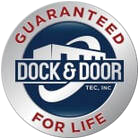|
Finally, summer is upon us. The snow is gone, the days are warmer and your warehouse doors seem to stay open day and night to allow the breeze to pass through.
As temperatures outside heat up so do temperatures inside. Things can start to get downright hot in the warehouse. A deceivingly gentle breeze across a hot asphalt parking lot can actually raise the ambient temperature in your warehouse by several degrees. Couple this with a busy work environment and you could have a formula for heat exhaustion or heat stroke of employees. This can and has happened in warehouses across the United States. How can you keep your cool? One easy and cost-effective way is to invest in HVLS fans. These are designed to circulate large volumes of air at very low speeds. By keeping the air moving throughout your warehouse it keeps the ambient temperature down while allowing the doors to be open and the breeze in. They also help to keep humidity down and cut down on dependency on your HVAC system. But, this leads to another dilemma… Pests and Birds… You have your HVLS system moving air, the doors are open, everyone is in a little better mood, until… The bird and bugs make their way in. How much production is lost swatting bugs or chasing birds out of the warehouse? This could be a popular discussion topic on its own here in Minnesota. Do you have swarms of flying insects being “Drawn to the lights” just to die off and fall on your inventory? To prevent pests from getting in while allowing the doors to be open and the breeze to flow simply invest in affordable dock screen-style doors. No more swatting mosquitoes or chasing birds around. Just a nice, comfortable warehouse and productive employees. Don’t let summer go by without enjoying what it has to offer. Consult with professionals now who can help evaluate your situation and provide proper solutions. In everyday life, there is a risk in just about everything we do. Most of that risk is so insignificant that we don’t even give it a thought. In a warehouse and especially at a loading dock the risk increases drastically. OSHA makes the following statement on their website, “loading docks can be dangerous places for forklifts, falls from a loading dock in a forklift can be fatal.”
With a combination of personnel, heavy equipment, moving product and trucks in the docks, the risks are endless. So, how do you assess risk and what do you do with that assessment? Webster Defines Risk as: risk noun \’risk\ : the possibility that something bad or unpleasant (such as injury or loss) will happen : someone or something that may cause something bad or unpleasant to happen : a person or thing that someone judges to be a good or bad choice for insurance, a loan, etc. It’s clear that working on a loading dock can be risky. Lots of heavy moving parts combined with foot traffic and moving trucks. Maybe the bigger questions are:
It is critical to understand the risk in your warehouse and how to mitigate that risk as much as possible. Part of risk mitigation is understanding the costs of death or injury versus the cost of equipment meant to limit the risk. I can tell you in no uncertain terms that the cost and maintenance of a truck restraint or a properly maintained dock leveler are far less costly than a serious injury or death. Have no doubt, mitigating or eliminating risk is attainable, it takes a commitment from management and staff. It takes a clear understanding of the risk and the expenses of doing everything or doing nothing. If you would like more information on risk management or mitigation please contact any of us at Dock & Door Tec. We will be happy to take a look at your facility, listen to you and provide you with a plan to help mitigate your risk. An ounce of prevention is worth a pound of cure…..we probably all heard our parents mutter those words to us as we were young and easily influenced, at this point, we didn’t really give it a second thought. That saying certainly holds true when it comes to your overhead doors. They’re one of those items that many people never really give a second thought to, until they become inoperable and you have a dock position out of service. These things seem to have a way of happening at the most inopportune moment possible and can turn something that could have been a very simple fix into a major inconvenience costing both time and money.
A simple maintenance program that could work in conjunction with your other loading dock equipment (dock leveler, vehicle restraints, door operator, fire doors, high speed doors, etc etc) can help you stay out in front of surprise emergencies….we could all use less of those. If you have any of the following conditions it might be money well spent to get your doors looked at by a professional technician and help reduce your exposure to potential breakdowns and safety issues.
If you would like to have us take a look at your overhead doors or any of your other loading dock equipment and have a conversation about their condition and how we can help reduce maintenance costs give us a call here at Dock & Door Tec. Brett Korinek Account Manager – Dock and Door Tec Since before the first loading dock was installed dock safety has been a concern. As the equipment got better, faster and heavier so too has the danger of working on a loading dock. We have all heard that safety is everyone’s responsibility but after seeing what I have seen on the docks, I question that old adage. I have seen fully loaded forklifts going far faster than they should, I have seen dock equipment ready to collapse being used. I have even seen my boss nearly crushed by a forklift.
So, who is really responsible to stop these mishaps and near misses? In the end, it is your reasonability to keep yourself safe first. You may say that it’s a self-centered act to think of yourself first but I contend that if everyone considered their personal safety first then everyone as a collective unit would be safer as a whole. It may be difficult to eliminate all loading dock mishaps but it is possible to minimize the damage to both personnel and equipment.
This is a very limited list and each facility has its own unique challenges, know your surroundings and keep yourself safe. Rick Hopkins Operations Manager, Dock & Door Tec To understand dock levelers we must first understand the purpose. A dock leveler is intended to act as a bridge to safely allow for the transfer of goods from a trailer to the building and vice versa.
To best determine the type of leveler needed it is important to gain a full understanding of your needs. Many factors should go into the decision, such as the volume of use, gross weight transferred, type of material handling equipment used (forklift, hand loading, pallet truck, conveyor, etc.), size of product handling, and building layout are just a few. Regarding cost, of course, the upfront cost is important but we see many paying less upfront (they really got a good deal!) but paying exponentially more over the life of the equipment due to a poor purchasing choice. Looking beyond the upfront cost and understanding the cost of ownership is very important. The other variable is safety, with the wide ranges and type of equipment available safety never has to be compromised. Operation types can be broken down into three basic types: mechanical, air and hydraulic. There are hybrids of these which are often a great choice, for example a hydraulic leveler with a mechanical lip will work great in many applications. Type of levelers:
Whether you are replacing existing equipment or designing a new facility it is important to keep your long terms needs front and center when selecting the right piece of equipment. |
AuthorVarious. Archives
August 2023
Categories
All
|
- Home
- About
- Career Opportunities
- Services
-
Equipment
- Dock Locks (Truck Restraints) >
- Fans & In-Plant Equipment >
-
Industrial / Commercial Doors
>
- High Speed Fabric Doors
- Security High Speed
- Rubber Doors
- Fire Door
- Rolling Steel
- Impactable Dock Doors
- Cooler / Freezer
- Fabric Roll-Up
- Impact / Traffic / Bump
- Overhead / Sectional Doors
- Operators / Activation
- Air Curtains / Screen & Bug Doors
- Strip Doors
- Door Entrapment Protection
- Door Protection
- Overhead Door Upgrades
- Loading Dock Levelers & Lifts >
- Loading Dock Seals & Shelters >
- OEM & Aftermarket Parts
- Safety / Energy / Security / Employee Comfort >
- Yeti Snow Removal
- Markets
- Blog
- Contact
Dock & Door Tec
Serving Minnesota, Wisconsin, Iowa, North Dakota & South Dakota
Serving Minnesota, Wisconsin, Iowa, North Dakota & South Dakota

 RSS Feed
RSS Feed
